Photography Charlotte Wales. Images courtesy of Jean Paul Gaultier
If you mention Jean Paul Gaultier to any fashion fan, you’ll elicit an impassioned, personal response. Whether it conjures images of Madonna’s conical corset, his costumes for The Fifth Element, or of the bleach-blonde designer himself, wearing a kilt and his trademark cheeky grin, the industry’s original enfant terrible has supplied us with some of the most iconic moments in fashion history over five decades in the game.
More than just your average fashion designer, it wouldn’t be a stretch to say he’s a cultural landmark in his own right. “In France, he’s really part of our cultural fabric,” concurs Florence Tétier, the co-founder of Novembre Magazine and the house’s recently appointed Creative and Brand Director, who took up the role shortly after Jean Paul stepped down from the helm last year. “Everyone knows who he is!”
Taking over from one of the most adored names in the industry is no simple task, but for her debut drop for the label, she focused on the ubiquity of JPG’s legacy. She didn’t do so alone either, inviting the designers behind five pioneering independent labels to express their relationship to the House: Alan Crocetti, Marvin M’Toumo, Nix Lecourt Mansion of Lecourt Mansion, Christa Bösch and Cosima Gadient of Ottolinger, and Alejandro Gómez Palomo of Palomo Spain.
As the drop’s title, Les Marins, implies, their task was to create a look that responded to one of JPG’s best-known archetypes: the sailor. First introduced into JPG’s visual vocabulary as the muse of the label’s seminal men’s perfume, “Le Male”, the image of a jacked, high-camp Navy sailor has become synonymous the house. The decision was also spurred on by the designer’s love of wearing marinière sweaters himself. “When you think of Jean Paul Gaultier, you instantly think of a marinière, but it’s funny — he never actually made them himself,” Florence says. “He did lots of stripes and marine-inspired pieces, but never a proper marinière. It was really cool to see the link between the way he dresses and the way he designs. And it was interesting to start with something quite obvious, and to see what the young generation of designers would do with the sailor’s outfit.”
Subversive as it may seem for a label of JPG’s standing to open itself up to the interpretations and approaches of so many other designers, “it was actually something Jean-Paul mentioned himself back when he was still working at Jean Patou,” Florence says. “When he left the house last year, it was the moment to do this. Jean Paul Gaultier really stands for being a pioneer in various fields, and this felt like a very fresh and interesting way to explore everyone’s special relationship to this brand.” Below, the five invited designers tell us more about theirs.
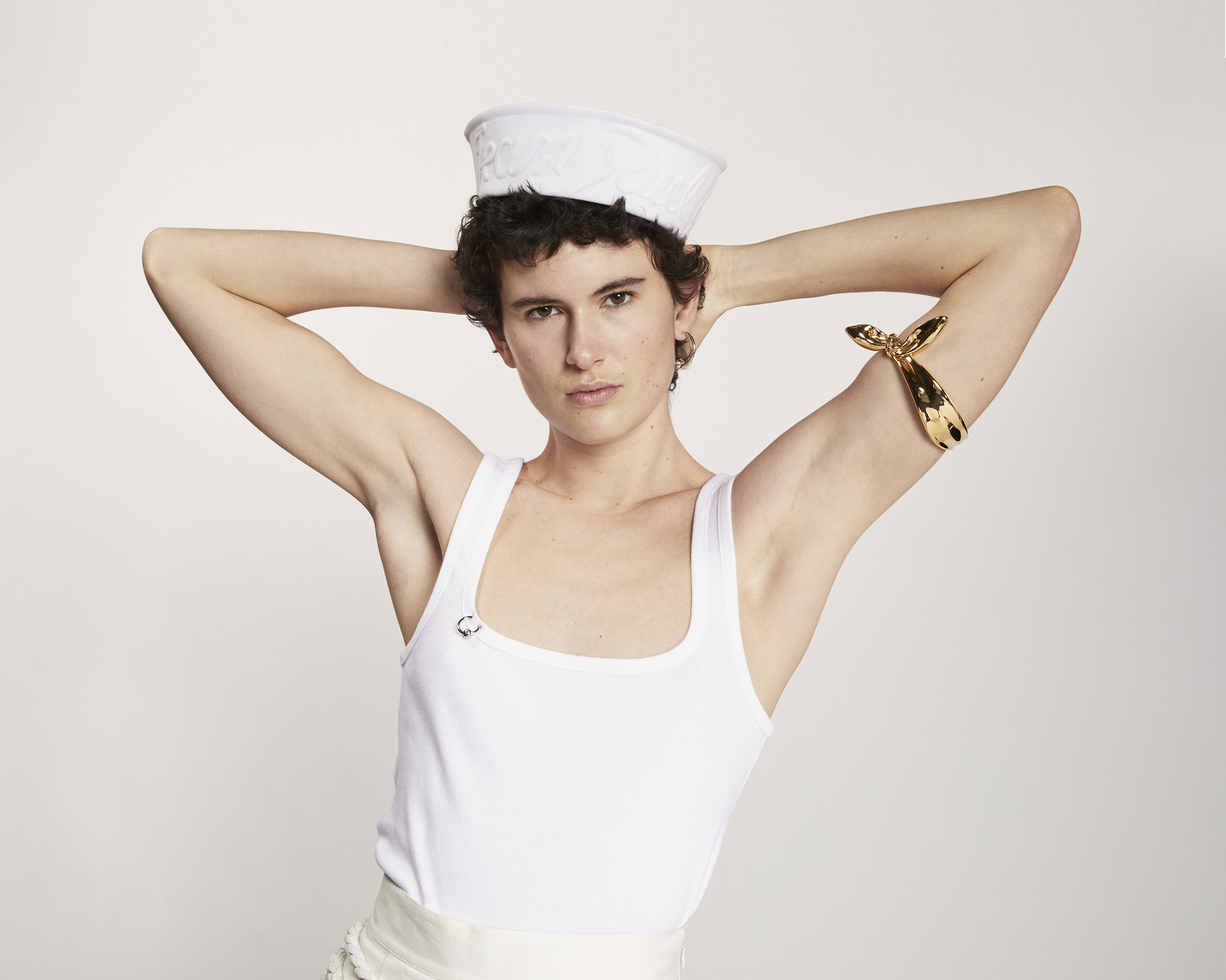
Alan Crocetti
What is your earliest memory of Jean Paul Gaultier’s work? I can’t recall the very first time I saw Gaultier’s work, but I grew up seeing glimpses of his shows in magazines and on TV, and was fascinated by his creativity, poise, and wit. It was extremely empowering to see underground and queer culture in the spotlight, even though I still had no idea of what that entailed. Apart from the beauty and delightful touch of sarcasm, I always connected to Gaultier and his work because it embodied a sense of freedom and acceptance. Seeing him being celebrated for being himself and for his amazing designs meant that my creations and I could also be noted and celebrated.
To you, what does Jean Paul Gaultier stand for? Jean Paul’s one of the trailblazers of using irreverence to present futurism and street culture with sociopolitical undertones. His approach to inclusivity has always spoken volumes to me. I like to think that we share this as a common value. Like his, my work is laden with inspirations from my surroundings but most of all, it attempts to disrupt the norm and give people options to feel seen and validated.
How did you approach reinterpreting the iconic Jean Paul Gaultier sailor? I had an idea of where I wasn’t going to start; I knew I wasn’t interested in seeing jewellery, because I’m always careful about not letting my work and vision get tainted by references from jewellery that already exists. So, I started with clothing to see where it would take me. My collection for JPG is playful and sexy and its main inspiration is Jean Paul himself. I tried to be true to the brand’s DNA, turning iconic garment ideas into wearable
solid sterling silver pieces, while making sure that my own identity and aesthetic was infused in them.
What do you hope old fans of the house, and people discovering it for the first time, are able to take from the collection? I hope they see the synergy of this collaboration. All the pieces are as Jean Paul Gaultier as they are Alan Crocetti. I hope the collection translates in a sexy, fresh and current manner and I hope the pieces bring joy and empowerment to their wearers.
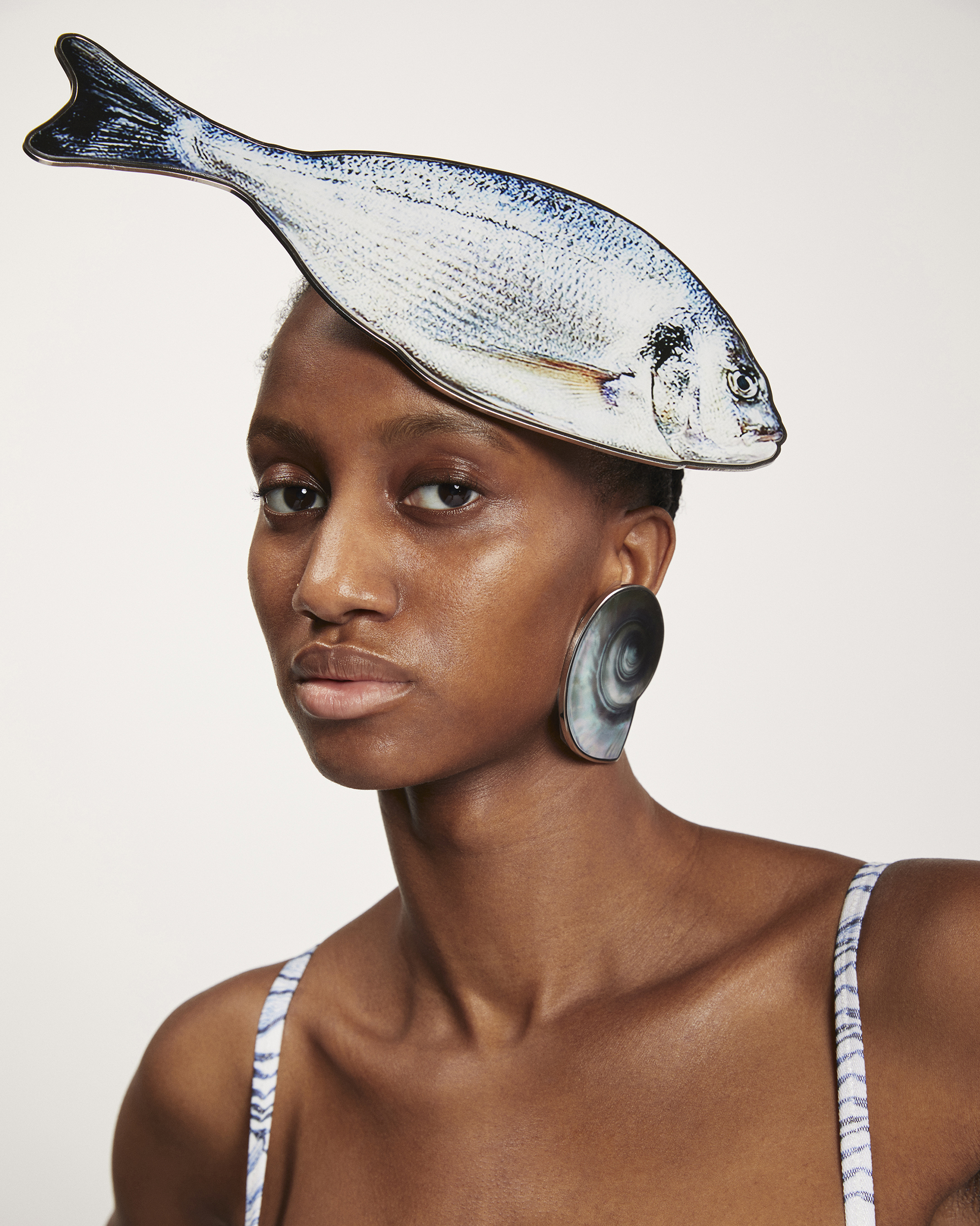
Marvin M’toumo
What is your earliest memory of Jean Paul Gaultier’s work? As far as I can remember, my first vivid image of Jean Paul Gaultier is the runway show Beth Ditto walked, SS11. I remember being struck by his casting choices over the years: Beth Ditto, Tanel Bedrossiantz, Laëtitia Casta, Madonna, Milla Jovovitch, Rossy de Palma, Naomi Campbell, Miss France, Nabilla Benattia… In a nutshell, it conveyed the idea that anybody wearing JPG was beautiful, and that we could all be praised for our unique beauty! His shows embodied a society in which so many of us wanted to live.
To you, what does Jean Paul Gaultier stand for? What I love the most about Jean Paul is his genuineness. The collections are always honest, true to his character, and spiced up with humour. And his work is boundary-less, spanning ready-to-wear, couture, costume for theatre and film… He designed fashion beyond norms and codes, and made it possible for everybody to define themselves as they wish. He’s mixed up the language of clothing, dressing men as women, women as men, and proven that fashion should, at its core, be about creativity, caring, joy and positivity! It’s an everlasting party!
How did you approach reinterpreting the iconic Jean Paul Gaultier sailor? When I drew my sailor look, I was telling myself a story of what it was about: once upon a time, there was a sailor. Neither a tuna nor a mermaid, she was something closer to a juicy oyster. She wore a corset, made of white débossé leather, and navy blue polish. These fake leather breasts with their conical seashell nipples, a pearl seashell earring, and a sea bream hairclip adorned her body in such a way that she looked like a cross between Walt Disneyʼs Ariel, a Creole courtesan and a Caribbean pirate. It’s a transparent and sensual look — half sailor sex appeal, half seductive Venus.
What were the most interesting common points between your creative language and Jean Paul Gaultier’s? When I went through the archives of the House, I fell in love with the Fall/Winter 1996 Collection, LʼHomme moderne. It is all about humour, irreverence, playfulness, fun. Male models wear clothes that mix the traditional menswear wardrobe with feminine couture archetypes. The collection is described by a voice-over that’s filled with hints and puns. In my graduate collection, Chien Fleur, I also thought of fashion through the lens of archetypes, poetic descriptions and humour, creating characters inspired by insults. I was conflating fashion vocabulary with vulgar language, and so every tiny detail — a colour or a fabric, for example — could be read as a narrative element.
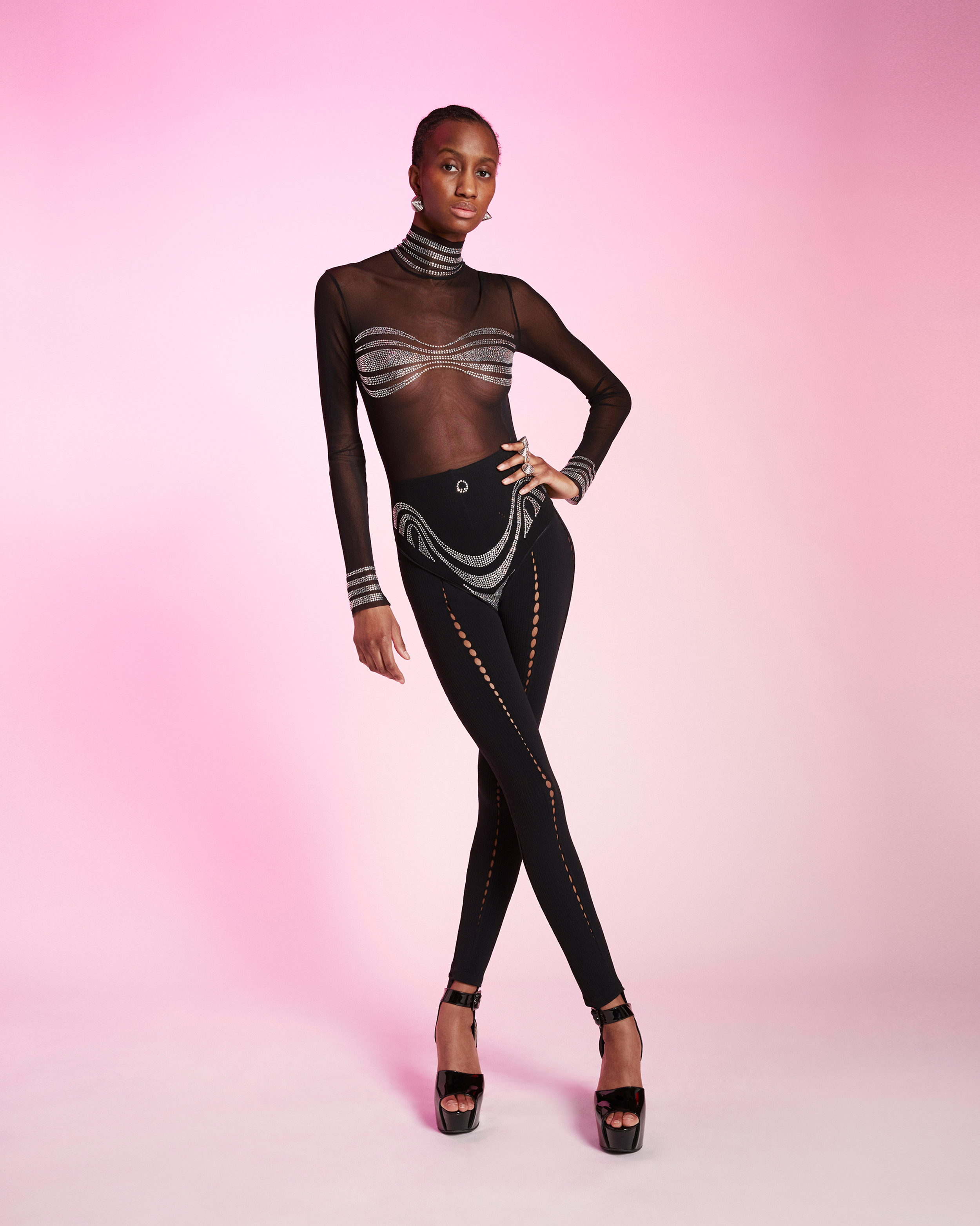
Nix Lecourt Mansion
What is your earliest memory of Jean Paul Gaultier’s work? Jean Paul Gaultier first came to me through his perfumes and TV commercials. Then, as my passion for fashion grew later on, I started discovering his work more and more — his collections, his work on films like Luc Besson’s The Fifth Element, his work with Madonna, Catherine Ringer…
How did you approach reinterpreting the iconic Jean Paul Gaultier sailor? For me, it was really an ex
cuse to pay homage to my favourite Jean Paul Gaultier concepts like the Cyber Baba, the fuseau legging, bodycon and trompe l’oeil, and playing with them to create a neo-JPG sailor silhouette.
What were the most interesting common points between your creative language and Jean Paul Gaultier’s? I think the main common points we share are that we both love to have fun more than anything else in the world, we value every form of rareness and beauty in human nature, and we both love to uplift those virtues.
What do you hope old fans of the house, and people discovering it for the first time, are able to take from the collection? I hope that, in each of the collaborations, they’ll see that we’re finding ways to perpetuating the amazing oeuvre of Jean Paul Gaultier, rather than a replace it. It’s a matter of designers sharing their love for what Jean Paul created.
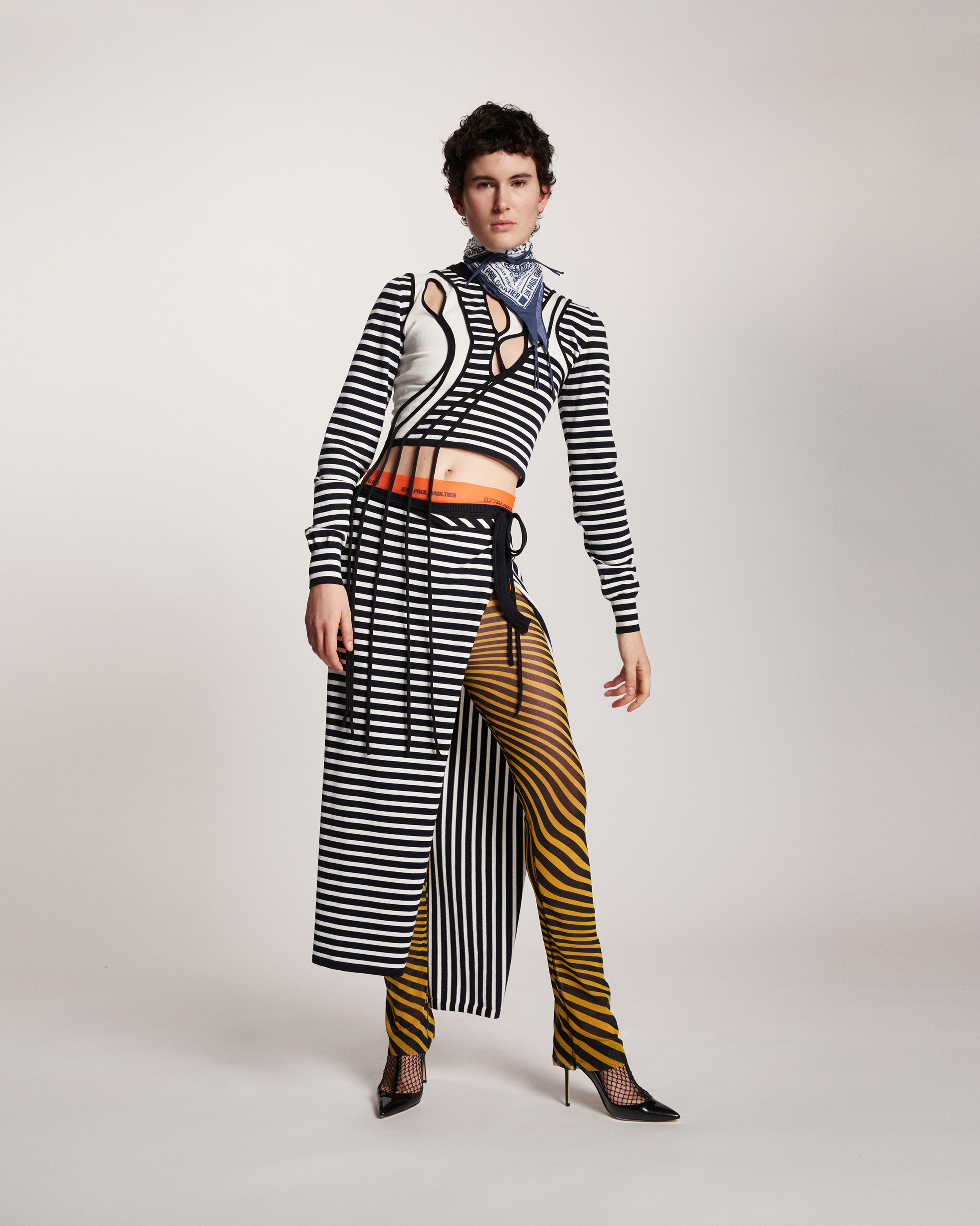
Cosima Gadient & Christa Bosch, Ottolinger
What is your earliest memory of Jean Paul Gaultier’s work? The first time we saw Jean Paul Gaultier’s work was in magazines, growing up in Switzerland. It was super catchy, playful, sexy, intriguing and extreme – very different from what anyone we ever saw on the Swiss streets would wear! We were fascinated, but it felt kind of out of reach for us. When we were older, though, we bought our first Gaultier pieces on eBay.
To you, what does Jean Paul Gaultier stand for? We love his playful attitude and sexy, fun approach to fashion. To us, his work is very sensual and the clothes very flattering to the body — everyone looks great in Gaultier.
How did you approach reinterpreting the iconic Jean Paul Gaultier sailor? The playful sexiness of the brand was the main thing we wanted to enhance with our pieces, and since Les Marins was the starting point, we played a lot with stripes and the different ways in which they can wrap around the body. We had this idea of taking the stripes that represent for Les Marins and letting them grow in new ways. The ways in which stripes wrap around the body allowed for Gaultier’s DNA and the Ottolinger DNA to kind of become one in a very organic way.
What do you hope old fans of the house, and people discovering it for the first time, are able to take from the collection? The collaborative nature of it. It felt like the right moment to gather together with other designers and contribute to a bigger house as a group — it feels super contemporary for it to be a collaboration, rather than having a single designer leading it.
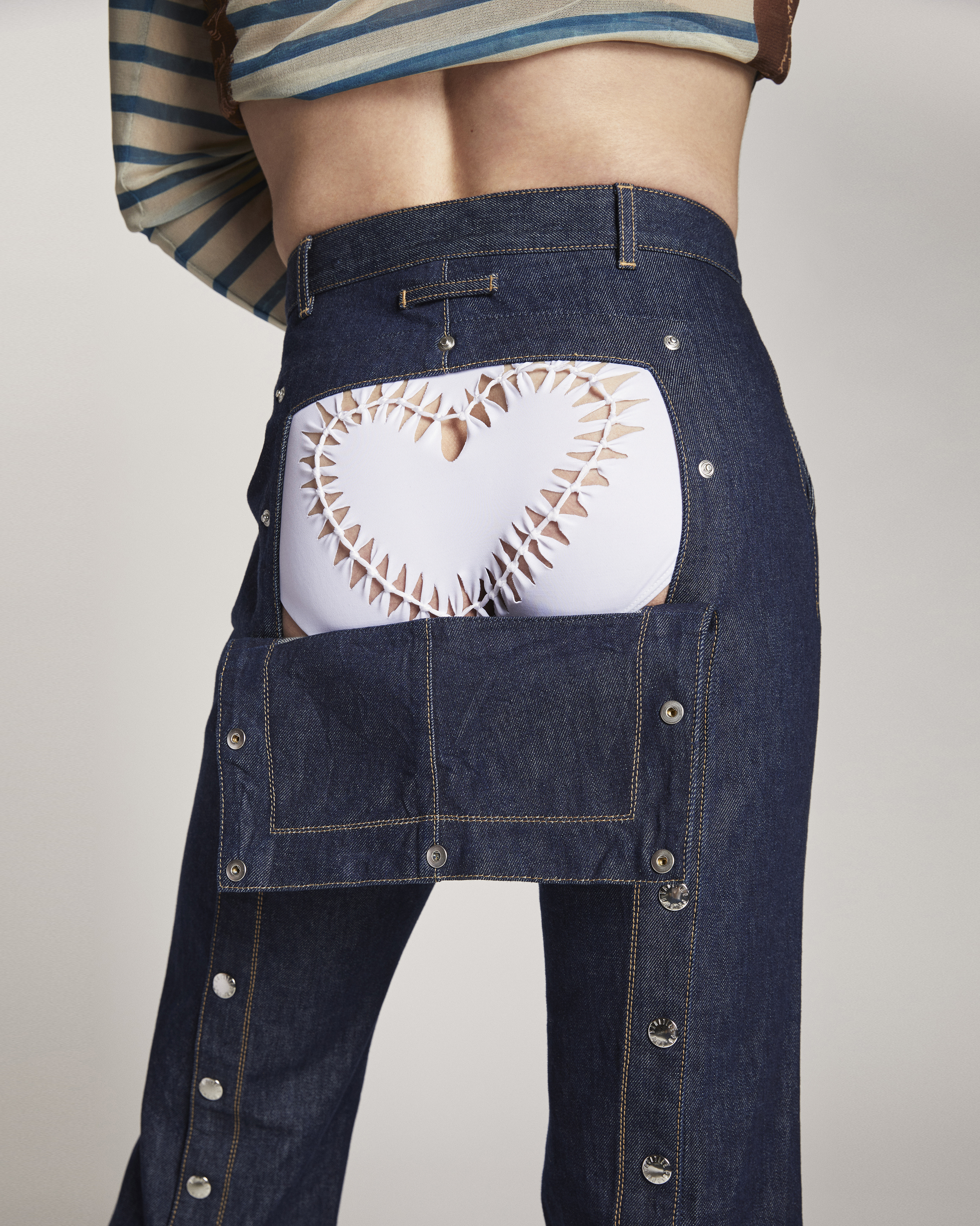
Alejandro Gomez Palomo, Palomo Spain
What is your earliest memory of Jean Paul Gaultier’s work? I feel like I’ve known Jean Paul Gaultier forever. I’ve always very much identified and felt drawn to his work. I don’t have a particular memory I can recall, other than perhaps Rossy de Palma walking in one of his really grungy, punky shows, but otherwise there isn’t a particular memory that stands out — rather it’s just a feeling that Jean Paul Gaultier has inspired my vision since I first became interested in fashion.
To you, what does Jean Paul Gaultier stand for? I really love that he has such a passion for couture and really well-made clothes — for construction, patternmaking, and tailoring — but there’s always a touch of humor. He’s never taken life too seriously. It’s something that the house of Gaultier has always led the way in, and it’s something that I’ve been playing with since the beginning of my career.
What were the most interesting common points between your creative language and Jean Paul Gaultier’s? Working as a menswear designer, and having an approach that is playful and feminine and free, has a lot to do with Jean Paul Gaultier. I’ve always said from the beginning that I haven’t i
nvented a new way of dressing men — Gaultier was already doing corsetry and couture for men in the 80s and 90s. Of course, Gaultier had a much wider world in womenswear and women’s couture, but the ideas that he brought to menswear were really a starting point for me.
How did you approach reinterpreting the iconic Jean Paul Gaultier sailor? I really though about how to merge our two worlds, and it came quite easily. It was a matter of mixing our codes, revisit pieces that are now Palomo classics and interpreting a Gaultier classic through that lens. We started with the flared denim trousers that have been my bestsellers since the beginning — they open via a flap at the back, I call them the ‘Ass-air trousers’, and realised that, in the case of Gaultier’s sailor trousers, they open at the front. So we took their trouser cut, and placed it on the back, to maintain a sense of cheekiness. With the marinière itself, we wanted to bring this idea of distortion and a slight sense of psychedelia — I thought it would be interesting to perceive the stripes as if you were a bit high. And then, written within them are the words ‘Palomo loves Gaultier’ — I wanted to think of the collaboration as if it were a real love story.

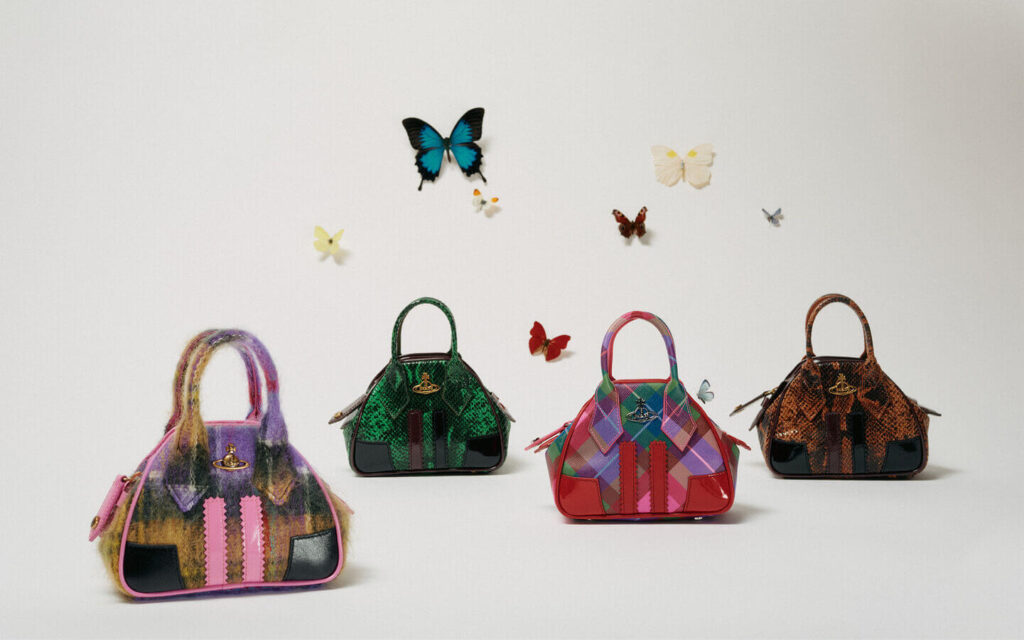

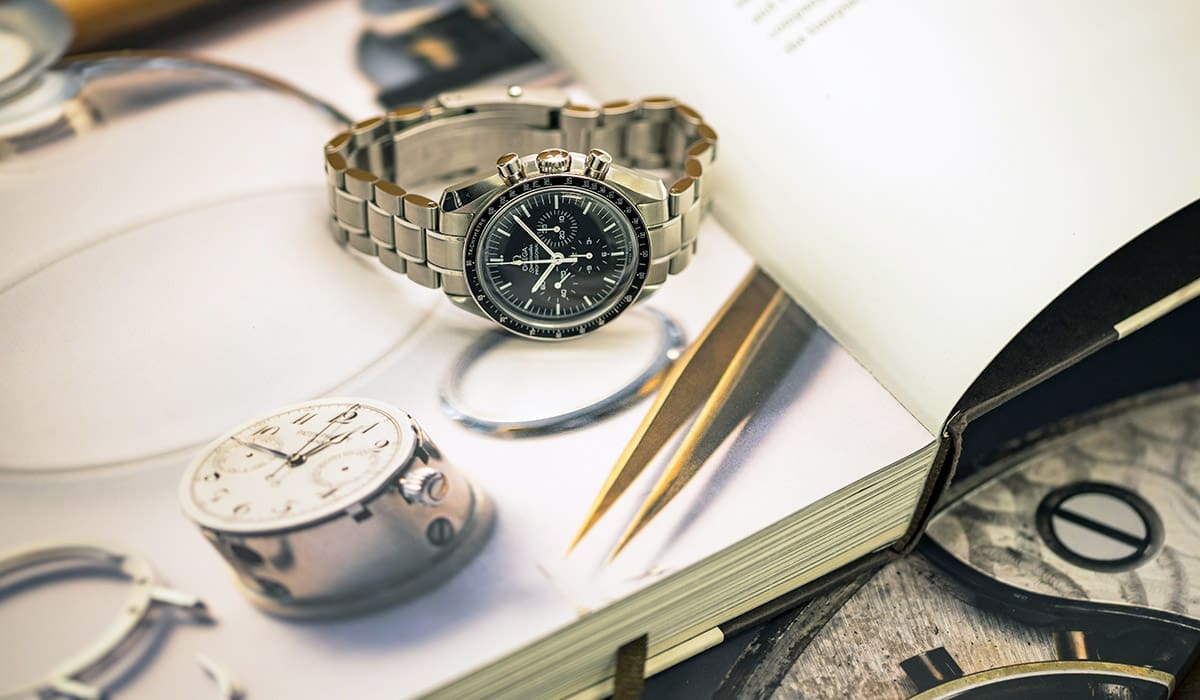

More Stories
Celebrity Fashion Trends That Ruled 2025
Best Dressed at the Oscars 2025
Top Streetwear Fashion Trends Dominating 2025